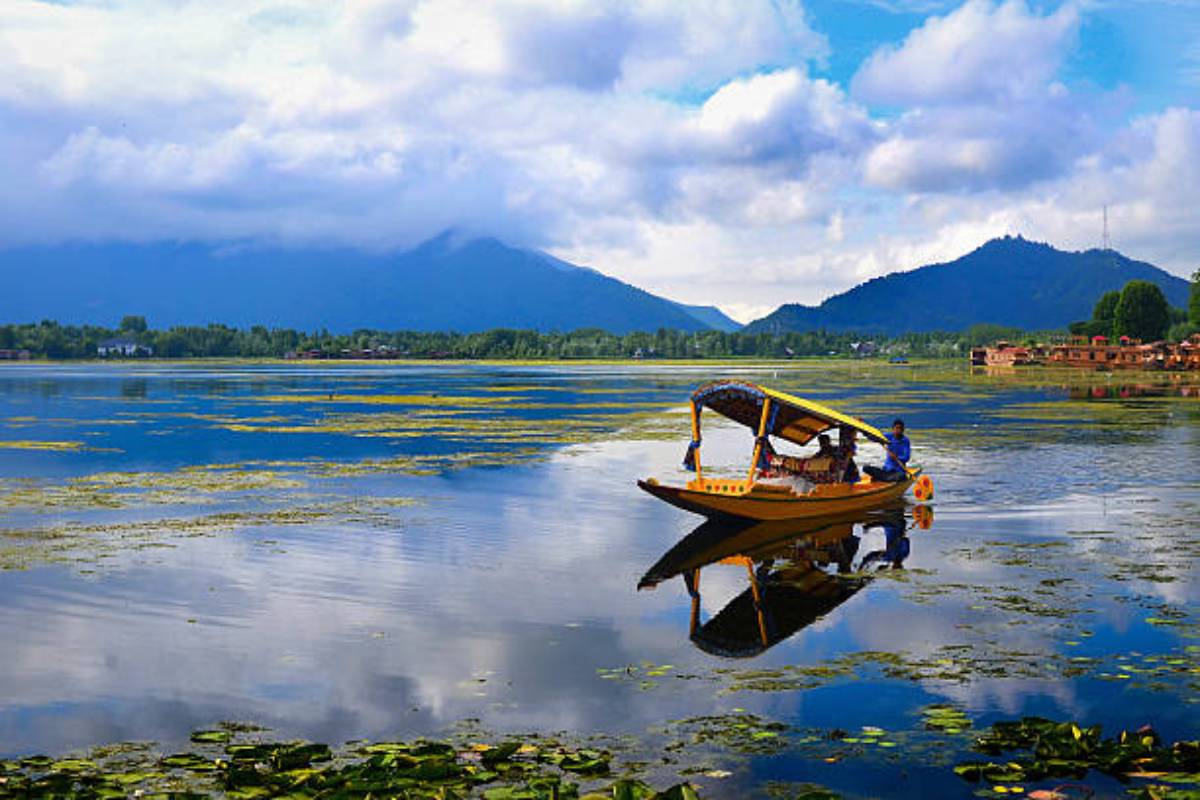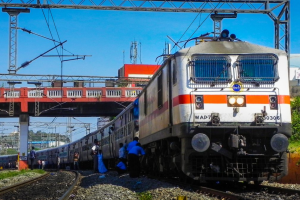If Rip Van Winkle were to suddenly wake up from his slumber in Srinagar, with its milling crowds and jammed roads, he could be forgiven for thinking that he was in some other State capital, like Patna or Lucknow, though the surrounding majestic mountains and armed soldiers standing at every twenty meters would soon bring him back to reality. Yet, the festive feeling in the city of Srinagar cannot be overstated – tourists are happy that they are finally visiting the beautiful valley, while locals are happily raking in the moolah. All hotels, from hole-in-the-wall ones to five-star ones, are fully booked, and shops are fully stocked – literally bursting at the seams with merchandise.
Not Srinagar alone; the entire Kashmir Valley is experiencing prosperity on an unprecedented scale. New, beautiful wooden houses dot the landscape; locals roam around in brand-new cars; and most gardens are full of picnicking boys and girls in smart school uniforms. Like Srinagar roads, the famed Dal Lake often sees shikara jams in the evening. Malls have started to pop up in all cities. Shops no longer close their shutters at sundown, though it is certainly not advisable to roam around at night.
Advertisement
Sadly, the available infrastructure is unable to cope with the tourist influx. Roads to all tourist spots are perennially jammed; roads not accustomed to heavy traffic have developed myriad potholes. Hotels do not have enough staff to attend to their guests. Despite consistent efforts at cleaning, weeds and flotsam in Dal Lake refuse to go away. Locals can be heard saying that there can be too much of a good thing.
Being a frequent visitor to the Kashmir Valley, I cannot help but compare the situation over the years. In the seventies, there was no overt militancy, but locals did not hesitate to disclose where their sympathies lay. At the time of the 1974 Asian Games, I was sitting in the front seat of a Srinagar-bound bus while some boys were listening to the commentary of the hockey final between India and Pakistan. I could not make out what the commentators were saying, but once there was a collective sigh and twice there were cheers of jubilation. I assumed that India had won 2-1, but the result was the opposite. Things were such that if you got into an argument with a shopkeeper, he would invariably say, “It may be so in India, but not here.”
On a visit in the mid-1980s, when militancy was raising its head, one could notice ominous graffiti on the walls and could also distinctly feel the fear in the atmosphere; schools had unscheduled closures, and most defence personnel and civilians posted in the Valley moved their families to safer places. The worst time was the nineties, at the beginning of which Pandits were driven out of Kashmir Valley. Tourists were advised not to cross Banihal Pass and limit their travel to places in Jammu Division.
Traveling from Leh to Delhi in 2001, our flight had a seven-hour layover in Srinagar, during which we decided to explore Srinagar. We had little choice; after the flight landed, passengers were asked to vacate the terminal building. We were astonished to find that we were almost the only tourists in the city; the great gardens were desolate, no Shikaras plied on Dal Lake, shops were closed, and the ones that were open had almost nothing to sell. For explanation, you could see rifle barrels on every rooftop. This ugly situation continued until the first decade of the present century. The 2010s saw things limping back to normal, yet at a call from unseen handlers, the entire Valley would come to a standstill and stone-pelters would appear at all corners.
Therefore, on my present visit, I was pleasantly surprised to find that things had returned to a somewhat normal state in the Valley, though invasive security checks at sensitive public places like airports dispel the illusion of normalcy. Moreover, it is difficult to fathom if there has been a change of heart or whether normalcy is occasioned only by the deployment of thousands of soldiers of all hues – Army, BSF, CRPF, and J&K Police – to name a few. In fact, many traffic jams are caused by huge trucks and armoured vehicles of the army and paramilitary forces.
But one thing is certain: a new wind is blowing through the valley. After the implosion of Pakistan, ordinary people see no future in Pakistan. Also, probably beset by bankruptcy, Pakistan cannot fund terrorist activities to the extent it was doing earlier. Efforts to bring Kashmiri youth into the national mainstream also seem to have borne fruit.
However, permanent peace and assimilation cannot depend on external factors, which may not remain favourable forever. Serious introspection is required to find out why things in Kashmir deteriorated to the extent they did. But an obvious hurdle to normalcy is a siege mentality caused by the visible deployment of lakhs of troops in the valley. Surely, with advanced technology, the presence of such a large number of armed men need not be so obvious. Citizens need to be assured that they are valuable national assets, not merely pawns in a battle with a foreign power.
A hard look at the administrative structure, built to combat militancy, is also required. The arrest of a Deputy Superintendent of J&K Police in 2020 for ferrying a militant in his official jeep shows that forces tasked with fighting militancy are sometimes compromised. Such instances are not unknown. The State earmarks humungous funds to combat militancy, and officials are vested with enormous authority for this purpose. Sadly, some black sheep cannot resist the urge to misuse the trust reposed in them. A classic example is that of a former Punjab governor who was credited with ending militancy and restoring peace and democracy in Punjab. The gentleman died in a tragic helicopter crash; heaps of unaccounted cash fell from his ill-fated helicopter, and much more was recovered from his official residence. A former Governor of J&K has alleged massive corruption in the State’s administrative set-up. Obviously, militancy cannot be eliminated until the chinks in our own armour are repaired.
Around 1600 years ago, the poet Kalidas wrote: “The place [Kashmir] is more beautiful than heaven and is the benefactor of supreme bliss and happiness. It seems to me that I am taking a bath in the lake of nectar here.” Through the centuries, Kalidas’s sentiments have been echoed by poets and writers like Khusro and Salman Rushdie and emperors like Jahangir.
Now is the time to correct the mistakes of the past and reclaim our paradise.
(The writer retired after teaching English for several years in Government schools of Rajasthan.)










